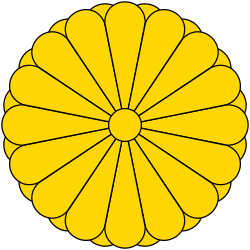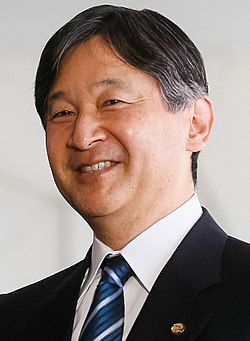Portál:Japonsko
 | portál Japonsko |  | ||
|---|---|---|---|---|
 |  |
e Jméno Japonska doslova znamená Země vycházejícího slunce: 日 (ni, slunce) 本 (hon, původ) a 国 (koku, země). Čínsky se tytéž znaky (日本国) čtou Ž'-pen-kuo, odtud zřejmě pocházejí názvy v evropských jazycích (francouzské Japon [žapon], anglické Japan [džepn]). | |||||||||||||||||||||||||
|
| ||||||||||||||||||||||||
e | |||||||||||||||||||||||||
Média použitá na této stránce
Satellite image of Japan in May 2003.
- The islands of Japan are shown clearly off the coast of North and South Korea, China, and Russia in this true-color image. Running down through the islands are a string of mountains that make up part of the Pacific “Ring of Fire.†The Ring of Fire is a zone of frequent earthquakes and volcanic eruptions that stretches in a series of arcs from New Zealand, through Indonesia, up through the Philippines, Japan, the Kuril Islands and Kamchatka Peninsula (Russia), across the Pacific Ocean via the Aleutian Islands, and down the coast of the Americas. Seventy-five percent of the world’s volcanoes are in this ring, making it the most volcanically-active region on the planet. Also shown in this image are a number of fires, which are marked with red dots. A few fires were detected in Japan, China, and North Korea, but the majority were detected in Russia’s Primorskiy-Kray region. This true-color Aqua MODIS image was acquired on May 1, 2003.
Autor: Chris Gladis from Kyoto, Japan, Licence: CC BY 2.0
The pagoda at Shitennoji in Osaka
Shitennoji - pagoda
Autor: flickr.com – Michel Temer, Licence: CC BY 2.0
The President of Brazil, Michel Temer, and Naruhito, Crown Prince of Japan, shaking hands at the World Water Forum.





